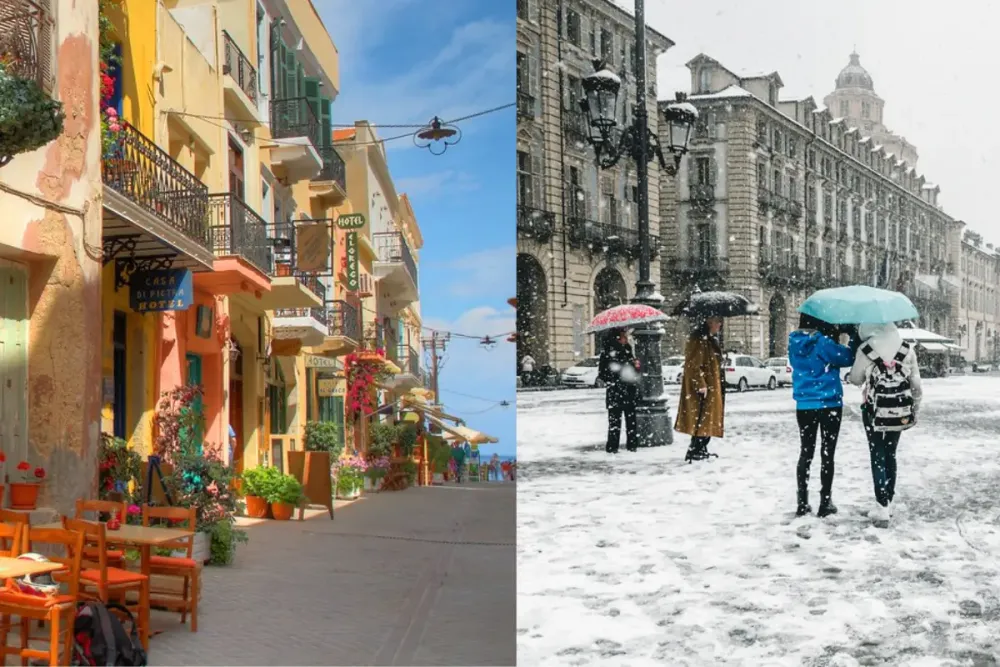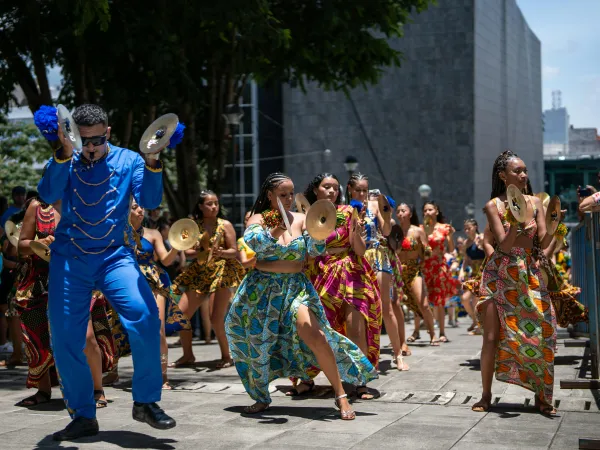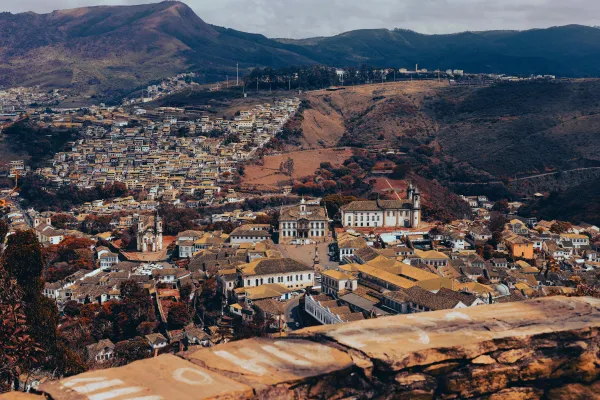Europe’s Dual-Season Escapes: Best Ski Resorts & Warm Fall Getaways
Europe is a continent of contrasts. Where one traveler packs skis, another packs swimsuits - and both find exactly what they’re looking for. People travel from all over the globe to visit Europe in the winter. Why? Beyond the thrill, Europe turns into a beautiful winter wonderland of alpine villages, twinkling Christmas markets, and Michelin-starred dining are all part of the experience.
Perhaps, one of the most anticipated activities is skiing, and Google searches for 'where is the best place to go skiing in Europe' have skyrocketed in recent years.
This guide explores Europe’s dual-season escapes, its iconic ski resorts, and its late-summer getaways, and gives you detailed responses to the skiing options available all across Europe.
Let's get started.
Best Ski Resorts in Europe
1. France
France is home to some of the highest and most extensive ski areas in the world, thanks to the French Alps. Chamonix and Val d’Isère stand out as two of its crown jewels, each offering a distinct style of skiing. The Alps provide reliable snow cover from December to April, with many resorts operating at altitudes above 2,000 meters. France is also connected to vast ski domains, meaning skiers can cover hundreds of kilometers of pistes on a single pass.
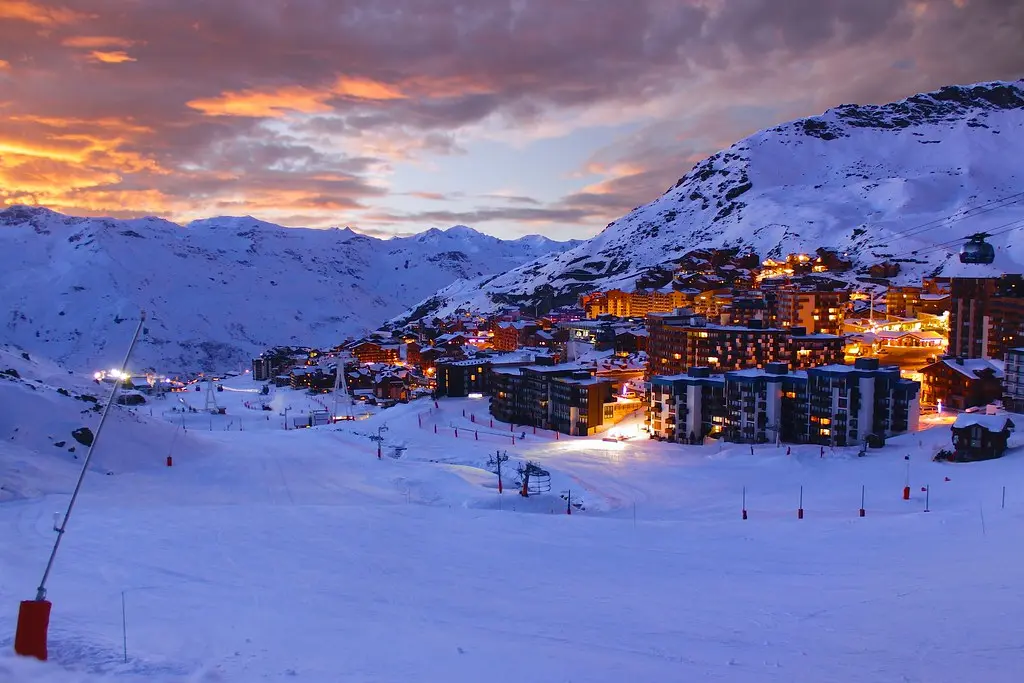
Chamonix
Often called the birthplace of extreme skiing, Chamonix is a mecca for advanced skiers who want steep descents and legendary off-piste routes like the Vallée Blanche. Even if you’re not a daredevil, the views alone are worth the trip—glaciers draping down mountainsides, jagged peaks piercing the sky, and a lively town full of mountaineering history.
What to Know
- Location: At the foot of Mont Blanc, Western Europe’s highest peak (4,808 m).
- Reputation: Known as the cradle of mountaineering and one of the world’s first true ski resorts. Host of the first Winter Olympics in 1924.
- Terrain: Famous for challenging off-piste routes like the Vallée Blanche (a 20 km descent through glaciers). Steep couloirs and varied terrain attract expert skiers.
- Town: Chamonix isn’t just slopes—it’s a year-round alpine hub with museums, gear shops, and a lively après-ski scene.
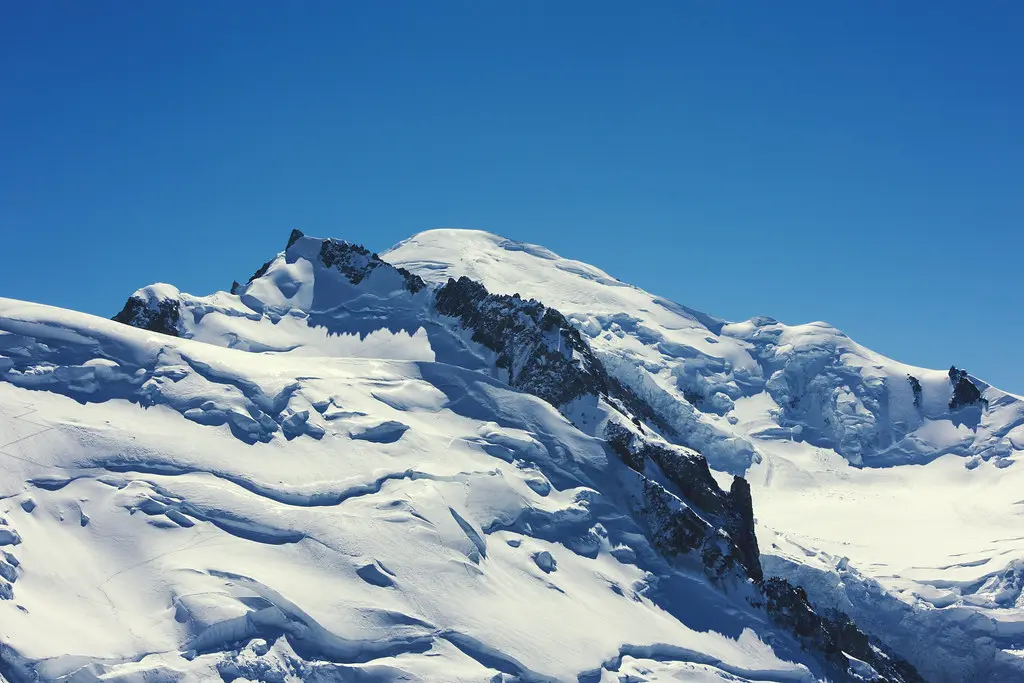
Val d’Isère
Val d’Isère, by contrast, blends reliable snow with a buzzing social scene. Linked with Tignes to form the vast Espace Killy ski area, it offers over 300 km of pistes, from wide beginner-friendly runs to challenging black slopes. Snowfall is consistent, and the resort stays open late into the season. After skiing, the après-ski culture takes over—bars, restaurants, and live music make evenings as memorable as the days.
What to Know
- Location: Linked with Tignes to form the Espace Killy, one of the largest interconnected ski areas in the world (over 300 km of pistes).
- Reputation: A snow-sure resort, with reliable coverage thanks to high altitude and extensive snowmaking. Known for hosting World Cup alpine ski races.
- Terrain: Wide variety of pistes—from beginner-friendly greens to expert blacks like La Face de Bellevarde. Perfect balance of terrain for all skill levels.
- Village: Val d’Isère combines traditional Savoyard charm (stone and wood chalets) with a vibrant après-ski scene—bars, restaurants, and nightlife that hums late into the night.
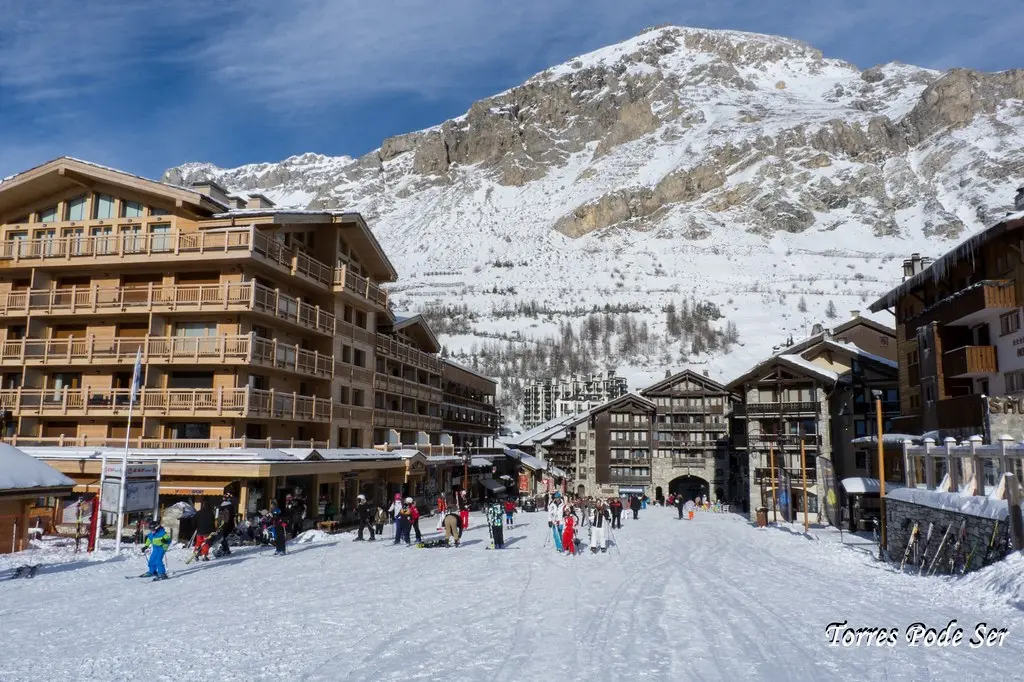
Why People Choose France
Scale: Some of the largest ski areas in the world (e.g., Les Trois Vallées, Espace Killy).
Accessibility: International airports in Geneva, Lyon, and Grenoble make resorts relatively easy to reach.
Culture: Ski trips double as cultural experiences—French food, wine, and alpine heritage enhance the stay.
Balance: France delivers both adrenaline (Chamonix) and comfort (Val d’Isère), making it a versatile destination for different traveler types.
2. Switzerland
Switzerland sits at the heart of the Alps, with peaks that scrape the sky and villages that define alpine charm. The country is renowned for its precision infrastructure—trains, lifts, and mountain cableways run with clockwork reliability. Ski areas are typically high-altitude, ensuring long, snow-rich seasons.
For travelers checking the best ski conditions right now, Switzerland consistently ranks among the safest bets thanks to its glaciers and altitude. Among its dozens of resorts, Zermatt and St. Moritz stand out, each representing a different side of Swiss skiing: rugged adventure versus polished luxury.
Zermatt
Zermatt is iconic, dominated by the sharp pyramid of the Matterhorn. Skiers love it for its reliable snow and its unique offer of year-round glacier skiing—a rarity in Europe. The slopes connect across the border into Italy, giving you the novelty of skiing in two countries in one day. Off the pistes, Zermatt maintains a car-free village atmosphere, where horse-drawn sleighs glide through streets lined with chalets and gourmet restaurants. For many, this blend of old-world charm and high-altitude skiing makes Zermatt the ultimate Swiss experience.
What to Know
- Location: Southern Switzerland, in the canton of Valais, right at the base of the iconic Matterhorn.
- Reputation: Known worldwide for year-round skiing on its glaciers, making it unique in Europe. Car-free village with horse-drawn sleighs and narrow streets.
- Terrain: Over 360 km of pistes, plus the ability to ski across the border into Italy (Cervinia). The Matterhorn Glacier Paradise is Europe’s highest lift-accessible station at 3,883 m.
- Culture: A blend of traditional alpine chalets and upscale dining, with a strong mountaineering history.
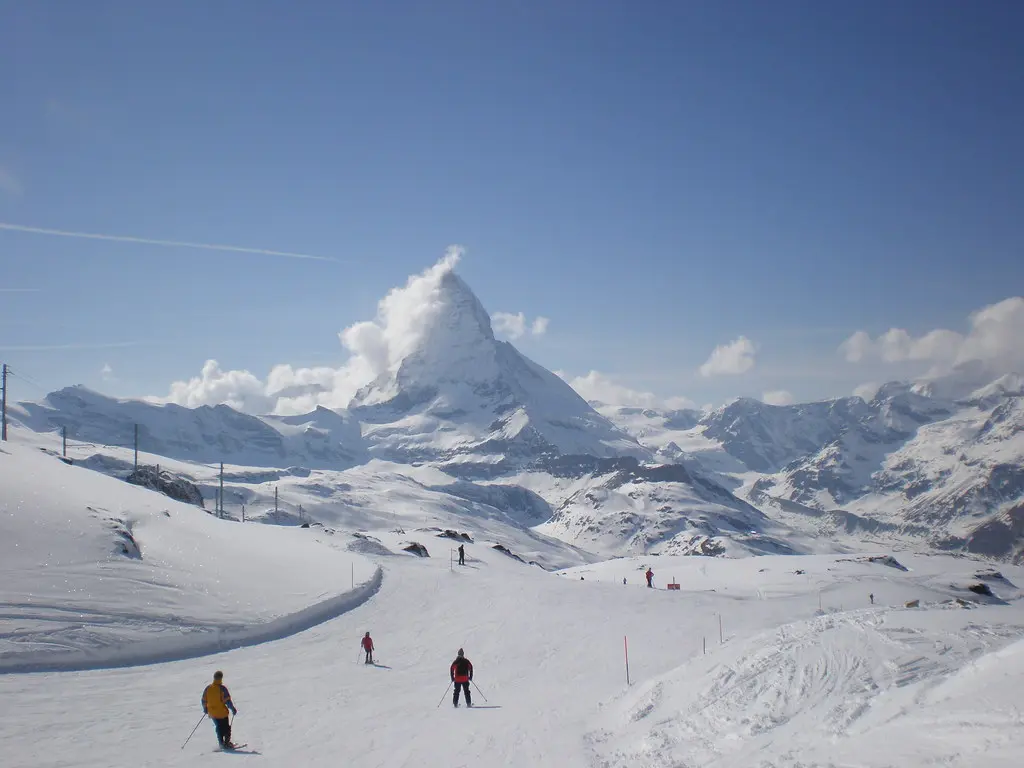
St. Moritz
St. Moritz, on the other hand, is where skiing meets glamour. Known as the cradle of winter tourism, it has hosted two Winter Olympics and remains synonymous with luxury. The slopes are sun-soaked, offering everything from gentle cruisers to challenging runs, but what sets St. Moritz apart is its lifestyle: designer boutiques, five-star hotels, and high-society events like polo matches on the frozen lake. It’s as much about the scene as the skiing.
What to Know
- Location: In the Engadin Valley, eastern Switzerland.
- Reputation: The birthplace of winter tourism, attracting aristocrats and celebrities since the late 19th century. Host of two Winter Olympics (1928, 1948).
- Terrain: Over 350 km of pistes spread across several linked areas, with sunny slopes that benefit from the valley’s unique microclimate.
- Culture: Known for its luxury lifestyle—five-star hotels, designer boutiques, and gourmet restaurants. Winter events include horse racing and polo played on the frozen Lake St. Moritz.
- Vibe: Where skiing is as much about being seen as it is about the slopes.
St. Moritz appeals to travelers who want skiing paired with glamour, history, and exclusivity.
Why People Choose Switzerland
Scenery: Panoramic mountain landscapes, anchored by peaks like the Matterhorn and Piz Bernina.
Reliability: High-altitude resorts mean long, dependable ski seasons.
Elegance: Swiss resorts emphasize refinement—whether it’s the precision of their lifts or the luxury of their hotels.
Duality: Switzerland offers both the rugged, adventurous spirit (Zermatt) and the polished, high-society scene (St. Moritz).
3. Austria
Austria often flies just under the radar compared to France and Switzerland, but ask seasoned skiers and many will point straight to the Austrian Alps as the best place to go skiing in Europe. Austria also offers some of the best value in the Alps—lift passes, food, and accommodation are often cheaper than in neighboring France or Switzerland, without compromising on quality.
Known for steep runs, vibrant après-ski, and a culture that makes every visitor feel welcome, two resorts rise above the rest: St. Anton and Kitzbühel.
St. Anton
What to Know
- Location: Tyrol region, part of the Arlberg ski area, one of the largest in Austria.
- Reputation: Known as the cradle of modern alpine skiing and a mecca for serious skiers.
- Terrain: Over 300 km of pistes, plus vast off-piste opportunities. Steep slopes and deep snow make it best suited to advanced skiers.
- Culture: Famous for its lively après-ski—bars like MooserWirt and Krazy Kanguruh are legendary, often filled with music and dancing before the sun sets.
- Vibe: Energetic, youthful, and adventure-driven.
St. Anton is legendary for both its terrain and its atmosphere. Considered the birthplace of modern alpine skiing, it challenges experienced skiers with steep slopes, deep powder, and epic off-piste routes. The ski area connects to neighboring resorts in the Arlberg region, offering over 300 km of pistes. But what really defines St. Anton is the après-ski—bars like MooserWirt and Krazy Kanguruh are almost as famous as the slopes themselves, turning afternoons into high-energy celebrations.
Kitzbühel
What to Know
- Location: Tyrol, about 95 km from Innsbruck.
- Reputation: One of the oldest and most glamorous ski resorts in the world, hosting the annual Hahnenkamm downhill race, regarded as the toughest on the World Cup circuit.
- Terrain: Around 230 km of pistes, with a good mix of beginner-friendly slopes and legendary expert runs. Modern lifts connect Kitzbühel to neighboring ski areas, creating one of Austria’s most varied networks.
- Culture: The town itself is picture-perfect, with cobblestone streets, pastel-colored houses, boutique shops, and fine dining.
- Vibe: A blend of traditional alpine charm and international prestige.
Kitzbühel, by contrast, blends challenge with charm. It’s home to the world-famous Hahnenkamm downhill race, one of the toughest on the World Cup circuit. But outside of race week, Kitzbühel is more than a skier’s proving ground—it’s a medieval town with cobblestone streets, pastel buildings, and cozy cafés. The slopes here suit a wide range of levels, and the scenery of the surrounding Tyrol region is pure Alpine postcard.
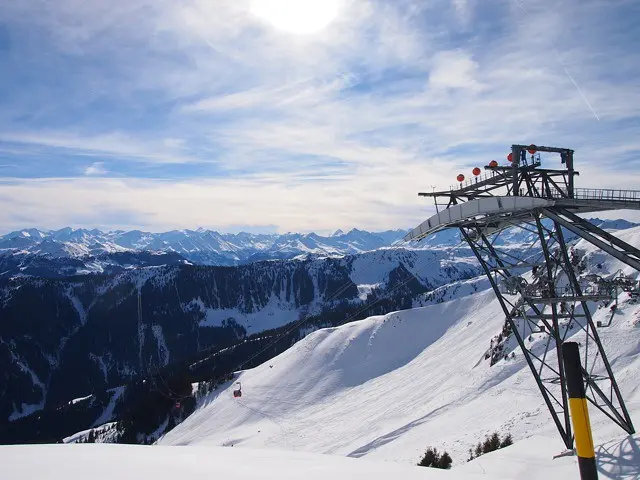
Why People Choose Austria
Advantages: Value for money compared to France or Switzerland.
Entertainment: Après-ski culture is fun, welcoming, and famous worldwide.
Scenery and charm: Austrian ski towns often feel more authentic and lived-in than purpose-built resorts elsewhere.
Balance: Austria delivers for both hardcore skiers (St. Anton) and those who want charm and history alongside their skiing (Kitzbühel).
4. Italy
Cortina d’Ampezzo makes a strong case as a destination spot for skiing. Known as the “Queen of the Dolomites,” Cortina combines dramatic scenery, Italian style, and a rich sporting history.
Set within a UNESCO World Heritage Site, the Dolomites’ jagged limestone peaks create one of the most striking backdrops in the skiing world. The resort is part of the Dolomiti Superski area, with access to over 1,200 km of pistes connected by modern lifts. Skiers can cruise wide, sunlit runs in the morning and enjoy gourmet Italian food in mountain huts by lunch. Cortina isn’t just about skiing—it’s about the lifestyle: espresso on the slopes, aperitivo at sunset, and a stroll through a town lined with designer boutiques.
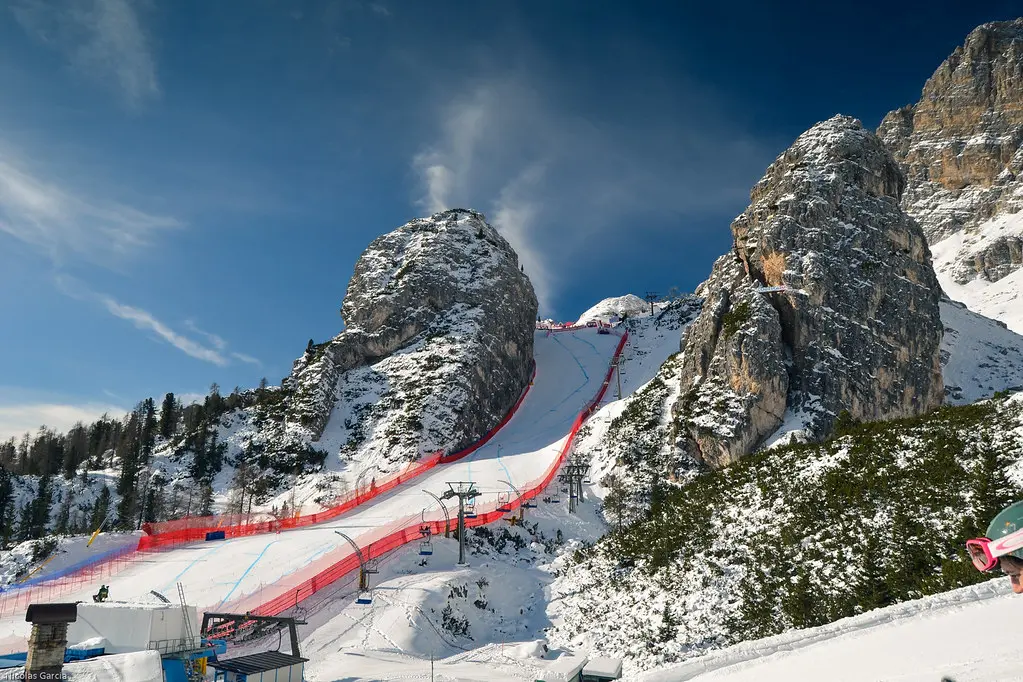
Cortina also carries an Olympic pedigree, having hosted the 1956 Winter Games and preparing again for the 2026 Milano-Cortina Olympics. This mix of history, beauty, and flair makes it a standout for travelers who want their ski trip to blend culture and sport.
Warm Fall Escapes in Europe
1. Spain
Costa del Sol
Costa del Sol, stretching along southern Spain’s Andalusian coast, lives up to its name—the “Sun Coast.” In September, average highs hover around 27°C (80°F), the Mediterranean Sea stays warm for swimming, and the summer crowds thin just enough to make beaches more enjoyable. Resorts like Marbella and Torremolinos still buzz with life, while smaller towns such as Nerja offer quieter charm. Beyond the beaches, you can wander Málaga’s historic center or explore Andalusia’s whitewashed villages, all while enjoying the mellow heat.
The Canary Islands
The Canary Islands, meanwhile, are Spain’s secret card for year-round warmth. Located off the northwest coast of Africa, they sit closer to the equator than mainland Europe, which means September temperatures often reach 28–30°C (82–86°F). Tenerife, Gran Canaria, and Lanzarote mix volcanic landscapes with golden and black-sand beaches. For travelers who want certainty that the sun will stick around, the Canaries are as close as Europe gets to guaranteed summer weather—no matter the season.
2. Portugal
For travelers asking where in Europe is hot in September, Portugal’s Algarve offers one of the continent’s most reliable answers. This southern region enjoys an average of 26°C (79°F) in early autumn, with over 300 days of sunshine a year. By September, the peak summer crowds have thinned, but the golden beaches and warm Atlantic waters remain irresistible.
The Algarve is famous for its dramatic coastline—towering limestone cliffs, hidden sea caves, and coves where turquoise waves crash against honey-colored sand. Towns like Lagos and Albufeira keep a lively holiday spirit with restaurants, bars, and boat tours, while smaller fishing villages such as Carvoeiro and Ferragudo provide quieter charm. September is also grape harvest season, making it the perfect time to sample local wines alongside fresh seafood.
What makes the Algarve special is its versatility. You can spend the morning hiking along cliff-top trails, the afternoon lounging on Praia da Marinha, and the evening enjoying grilled sardines at a beachside café. It’s a destination that offers both relaxation and exploration, wrapped in a climate that still feels like summer well into fall.
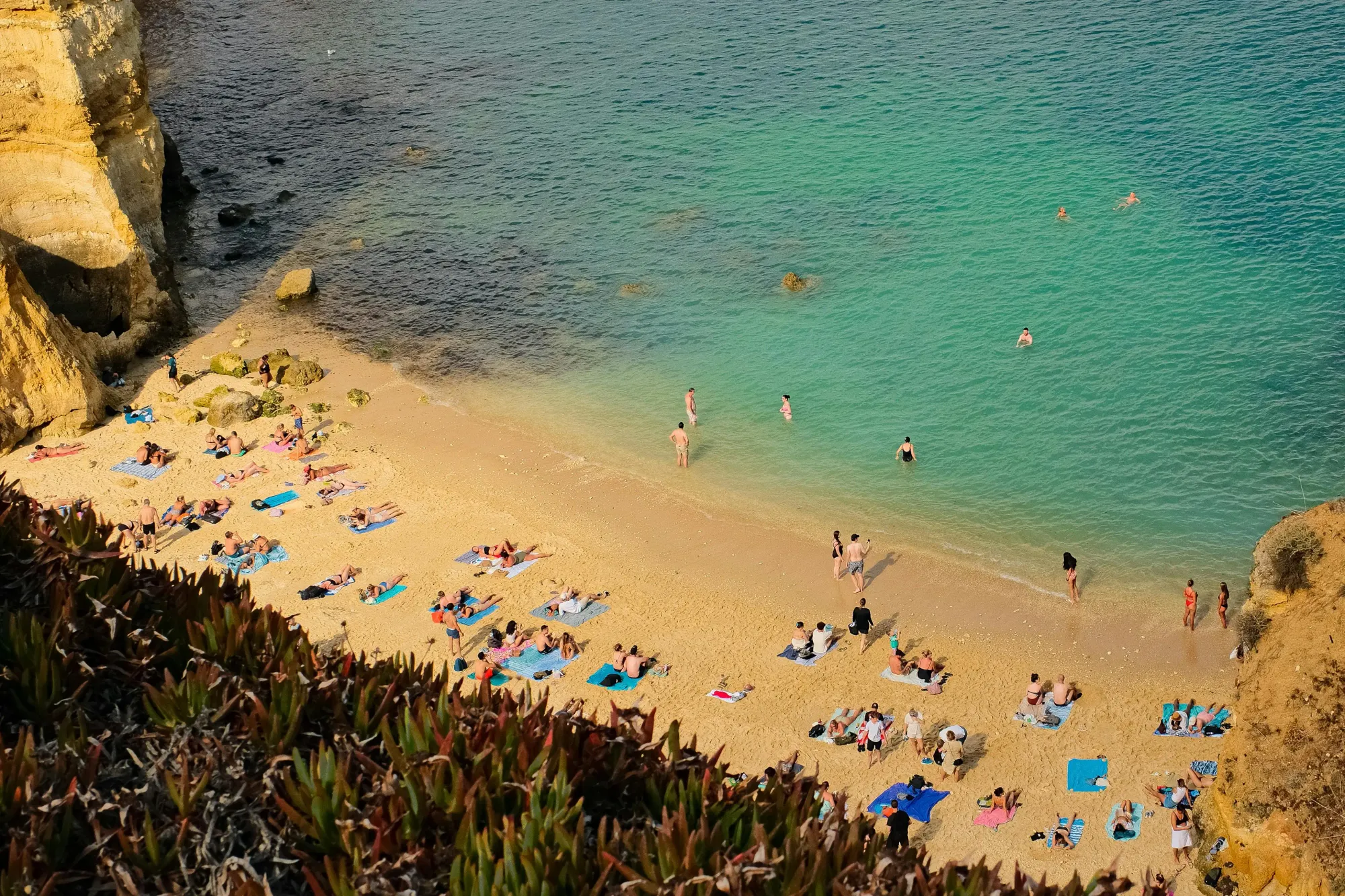
3. Greece
In early autumn, Greece feels like it was made for slow travel. The air stays warm, the sea still holds the heat of summer, and the crowds that filled the islands in July and August have thinned to a trickle. Among the many choices, Crete and Rhodes stand out as two of the most rewarding places to experience this gentler season.
Crete
Crete, Greece’s largest island, offers variety on a grand scale. Its beaches range from pink-sand Elafonisi to the tropical-feeling Balos Lagoon, while inland you’ll find rugged mountains, vineyards, and villages where traditions run deep. Hikers take on the Samaria Gorge, history lovers explore the ruins of Knossos—the legendary seat of King Minos—and foodies fall in love with farm-to-table Cretan cuisine. In September, the island feels less crowded yet fully alive, perfect for those who want both culture and coast.
Rhodes
Rhodes, further east in the Dodecanese, blends medieval history with island resort life. Its UNESCO-listed Old Town is one of Europe’s best-preserved medieval cities, complete with winding alleys, fortress walls, and Ottoman-era mosques. Beyond the city, golden beaches stretch along the island’s coast, and September sun keeps the water warm enough for long swims. The combination of heritage and heat makes Rhodes a powerful draw for late-season travelers.
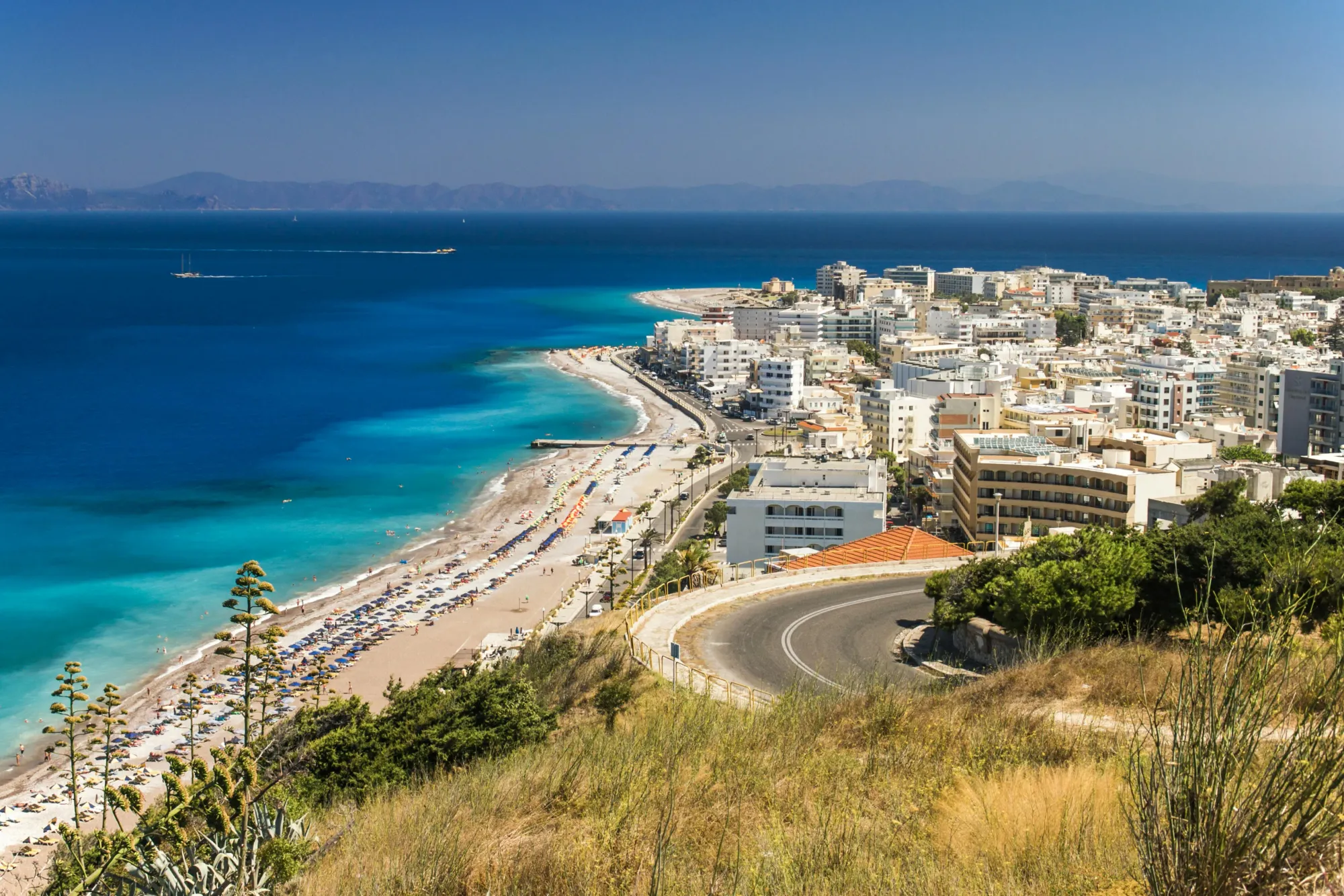
4. Italy
September in Sicily feels like a secret the island is happy to share. The heat of midsummer softens into something more comfortable, but the skies stay clear and the Mediterranean remains warm enough for long swims. Towns are lively without being crowded, and the season of harvest gives the island a special richness.
Beaches like San Vito Lo Capo and Scala dei Turchi are still golden and inviting, while inland the land turns to vineyards heavy with grapes and markets piled with figs, pistachios, and almonds. In Palermo and Catania, the streets hum with daily life, but it’s easy to escape into baroque piazzas or seaside cafés where the pace slows to match the weather.
Above it all rises Mount Etna, sometimes steaming, always watching. Hiking its slopes offers views that stretch across the island, reminding visitors that Sicily is a land of both beauty and drama. In early autumn, the island’s mix of culture, food, and sun creates an atmosphere that feels endlessly generous.
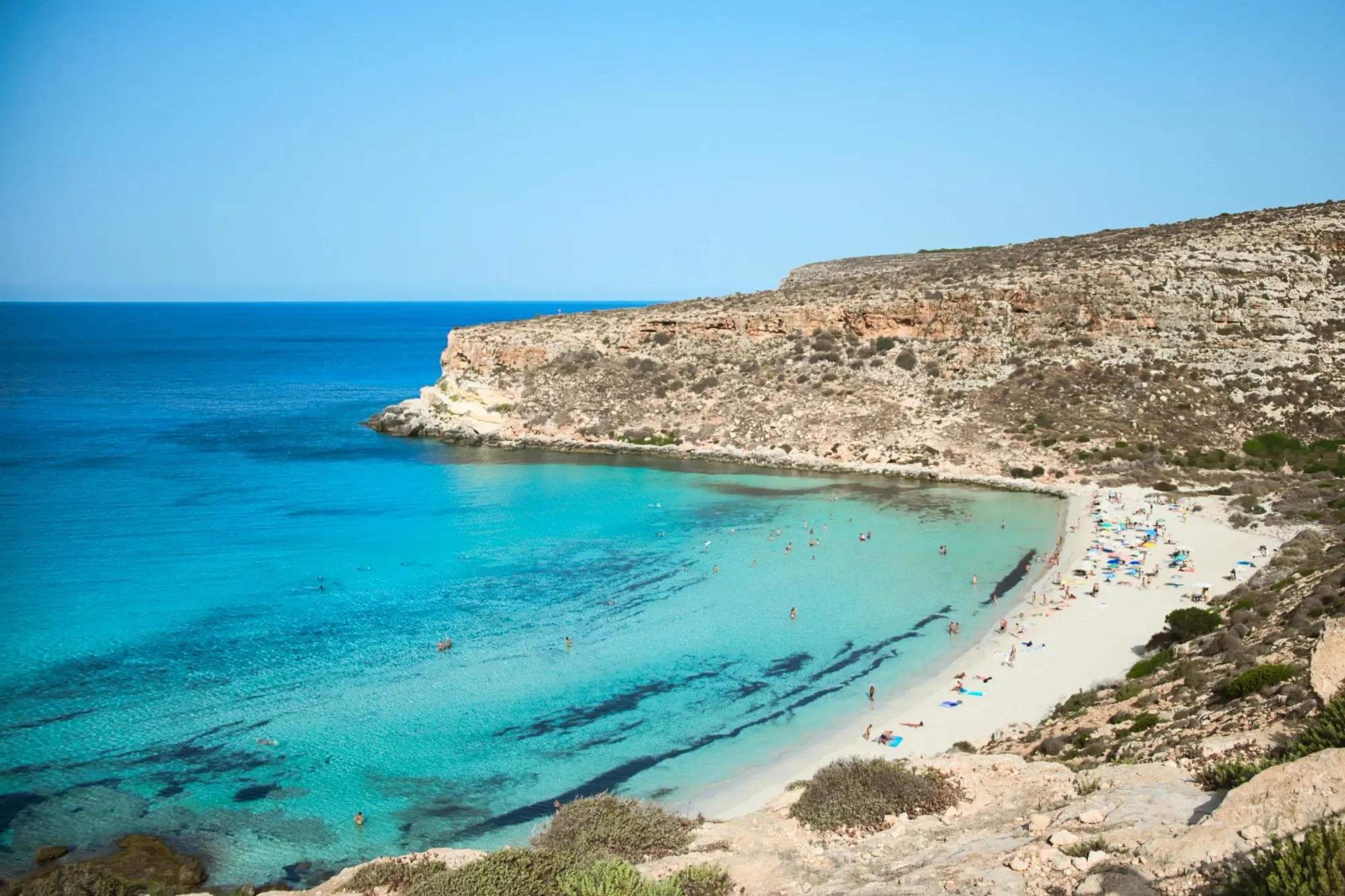
Conclusion
It does not matter if you're asking "where is the best place to go skiing in Europe?" or "where in Europe is hot in September?" The answer depends on your style.
France’s Chamonix and Val d’Isère bring drama and dependable snow, while Spain’s Costa del Sol and Canary Islands and Italy’s Sicily all keep summer alive well into autumn.
That’s Europe’s true magic—it isn’t bound to one season. It’s a continent of contrasts, where you can ski beneath glaciers one month and swim in turquoise seas the next.


